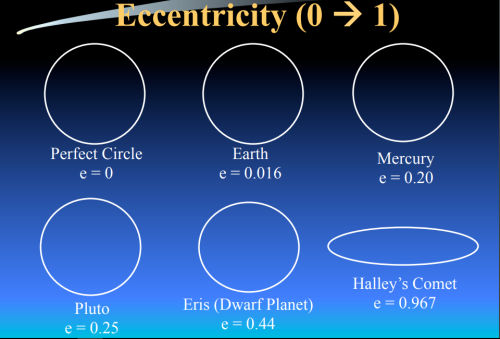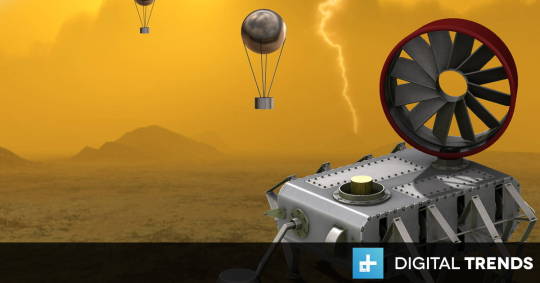Daily Science Dump: Kepler’s First Law Edition
Daily Science Dump: Kepler’s First Law Edition
Bonjour my science nerds. I got a question regarding Kepler’s Three Laws because they can be somewhat confusing. And tbh, they really are. Because they can be a bit of a pain, I’ve decided to break this up into 3 sections, one for each law. They generally follow the same idea: planetary orbits are not circular. The difference between each law resides in the minute details. And because they are really detailed, I wanted to make sure I covered everything of each law so they don’t get confused. Let’s get started!
Kepler’s First Law of Planetary Motion
History
Before we get into the actual laws, we need to understand why these laws are so important. During the 1500s and early 1600s, astronomy was starting to become a big deal. We were trying to figure out where we are in the universe. During this time period, the famous geocentric and heliocentric models were stirring up massive controversy in the Catholic Church (for obvious reasons). Ptolemy brought around the geocentric model, which put Earth at the center. This was a natural thought at the time because it was a religious concept that man was God’s greatest creation, so God would want to put man at the center of everything (little presumptuous on our part tbh). Next, Copernicus said that our Sun was in the center, and all the planets orbit around the sun. This clearly didn’t go down well with the Church because it was the first instance of defying the Catholic Church, therefore defying God. In an attempt to settle down the controversy, Brahe brought around a new theory model, putting the Earth at the center, having the Sun and Moon orbiting the Earth, and then the rest of the planets orbiting the Sun. It was a very far reached model but people bought it. All of these models had one thing in common; all the orbits of the planets were circular. But none of none of the actual data fit with perfect circular orbits. This is where our boi Kepler comes in.

It was long believed that the planets should orbit along circular paths, because a circle is considered an ideal shape. But as I mentioned before, none of the data was fitting the circular shape, particularly Mars. Kepler brought around another shape, the ellipse, to explain the missing pieces of the data. An ellipse is like a flattened circle with some important properties that Kepler used for his laws. His first law focuses more on explaining the patterns of elliptical orbits. The second and third law goes into more detail on the properties of elliptical orbits.
If you’ve taken a simple geometry class, you know the basic principles of ellipses. We know there’s a major-axis and minor-axis (the diameter horizontally and the diameter vertically), the focal points, and eccentricity. All of these are important for planetary orbits. If we take a trip back to geometry, we know that the positions of the focal points affect the eccentricity, which is basically how much it’s being squished (if e = 0 then it’s a perfect circle and if e = 1 it’s a parabola).

All of this geometry going on transfers over into planetary motion. In this case, the Sun acts as one of the focal points. The other focal point is merely imaginary. Mathematically it exists but there’s nothing at that point in space that says “Hey! I’m a focal point for Saturn!”. But we know for sure that the Sun is on of the two focal points. This revelation caused a lot of uproar and many refused to believe it. Partly because the orbit of a lot planets are so close to a perfect circle it’s extremely hard to tell it’s elliptical at all.
Eccentricity has to stay between 0 and 1, like I explained earlier. An eccentricity of 0 is a perfect circle. If it’s 1 or greater, it’s a parabola. For the planetary motion, most of the planets’ eccentricity doesn’t even crack 0.1 (Pluto has a bit over 0.2 but apparently Pluto isn’t a planet #JusticeForPluto). Earth’s eccentricity is currently 0.0167, which means its very very close to a perfect circle. But not quite. To be quite honest, the fact that Kepler was able to figure out that the orbits were not circular is astonishing.

So that’s it for Kepler’s First Law of Planetary Motion! These laws were critical in understanding how our universe works and how our solar system plays out. It opened our eyes to many new ideas and thought processes. This law is just the first step of understanding the orbital tendencies of planets. On Friday, we will dive right into Kepler’s Second Law of Planetary Motion which goes into detail about the speed of the planet due to the elliptical orbit.
Don’t forget, I’m updating the Blog Website everyday with something new because I have no life…. I added cool space music! If you have any cool song recommendations for the playlist definitely shoot me a message!
If you have any questions about today’s Daily Science Dump or any past ones, don’t be afraid to ask!
As always,
Stay Nerdy!
R.L.
More Posts from Venusearthpassage and Others










Solar System Infographs
NASA theorizes a manned mission to Venus
Washington (UPI) Dec 19, 2014 The science world has been mostly fixated on Mars and comets, but some scientists at NASA are starting to talk about Venus - suggesting a manned mission to our closest neighbor could be simpler and less expensive than a trip to Mars. For some time, Mars has been the logical next step for the United States space program. It’s the closest planet with tolerable, Earth-like conditions. NAS Full article

ASTEROID DAY 2018
On 30 June 1908, 110 years ago, a 40 m asteroid struck the Earth over Tunguska, Siberia.
Destroying an area of forest the size of Greater London, this was the most significant impact event in Earth’s recent history.
Now recognised by the United Nations as Asteroid Day, 30 June marks a global opportunity to raise awareness of the threat and opportunity posed by the numerous rocky bodies traversing space.
Since 2009, ESA has played a leading role in the global hunt for risky asteroids and comets – known formally to astronomers as near-Earth objects (NEO) – and is currently developing cutting-edge widefield telescopes that will have the ability to scan the entire sky in just 48 hours.
ESA also carries out crucial analysis as part of its Space Situational Awareness (SSA) programme and mobilises observatories and astronomers worldwide through its SSA NEO Coordination Centre at the Agency’s ESRIN facility in Italy.
Each year, Asteroid Day is broadcast live across the globe with a packed programme that brings together astronauts, rock stars and scientists.
Highlighting our potentially vulnerable place in space, the live event also describes the many ingenious and yet not-far-from scifi potential solutions to these dangerous roaming rocks.
Each year hundreds of regional events also take place, with 78 countries so far having hosted concerts, community events, lectures and much more.

Please Build A Cloud City Over Venus

Bruce McCandless II (June 8, 1937 – December 21, 2017)
Rest In Peace

NASA is developing a rover for Venus that could survive the planet’s tumultuous atmosphere.


When it landed on Venus on December 15th, 1970, Venera 7 became the first spacecraft to achieve a soft-landing on another planet. Only able to transmit surface data back to Earth for 23 minutes due to signal degradation, it was determined by Venera 7’s transmission that the atmosphere of Venus is composed 97% of carbon dioxide, with a temperature reading of 887°F (475°C).

Craters on Venus.
-
 andrejupiter liked this · 4 years ago
andrejupiter liked this · 4 years ago -
 daleee111 liked this · 6 years ago
daleee111 liked this · 6 years ago -
 nuclearnyx24 liked this · 6 years ago
nuclearnyx24 liked this · 6 years ago -
 chiaroscuro-92 liked this · 7 years ago
chiaroscuro-92 liked this · 7 years ago -
 goatenthusiastest-blog liked this · 7 years ago
goatenthusiastest-blog liked this · 7 years ago -
 and-to-all-a-good-night reblogged this · 7 years ago
and-to-all-a-good-night reblogged this · 7 years ago -
 takasirius-blog liked this · 7 years ago
takasirius-blog liked this · 7 years ago -
 iainmcbill liked this · 7 years ago
iainmcbill liked this · 7 years ago -
 qualitypersonlover-blog liked this · 7 years ago
qualitypersonlover-blog liked this · 7 years ago -
 lozzaboiiii reblogged this · 7 years ago
lozzaboiiii reblogged this · 7 years ago -
 lunarrosebunnys-blog liked this · 7 years ago
lunarrosebunnys-blog liked this · 7 years ago -
 oh--captain--my-captain reblogged this · 7 years ago
oh--captain--my-captain reblogged this · 7 years ago -
 oh--captain--my-captain liked this · 7 years ago
oh--captain--my-captain liked this · 7 years ago -
 worstastronomer-blog liked this · 7 years ago
worstastronomer-blog liked this · 7 years ago -
 venusearthpassage reblogged this · 7 years ago
venusearthpassage reblogged this · 7 years ago -
 venusearthpassage liked this · 7 years ago
venusearthpassage liked this · 7 years ago -
 decptiongenesis reblogged this · 7 years ago
decptiongenesis reblogged this · 7 years ago -
 decptiongenesis liked this · 7 years ago
decptiongenesis liked this · 7 years ago -
 relativistcosmicnerd-blog liked this · 7 years ago
relativistcosmicnerd-blog liked this · 7 years ago -
 and-to-all-a-good-night liked this · 7 years ago
and-to-all-a-good-night liked this · 7 years ago -
 seaeclectic liked this · 7 years ago
seaeclectic liked this · 7 years ago -
 spacetimewithstuartgary reblogged this · 7 years ago
spacetimewithstuartgary reblogged this · 7 years ago -
 lunardoughnut liked this · 7 years ago
lunardoughnut liked this · 7 years ago -
 jammies9 liked this · 7 years ago
jammies9 liked this · 7 years ago -
 seventhzero liked this · 7 years ago
seventhzero liked this · 7 years ago -
 parzivalest liked this · 7 years ago
parzivalest liked this · 7 years ago -
 moitheoneandonly liked this · 7 years ago
moitheoneandonly liked this · 7 years ago -
 simple-friend liked this · 7 years ago
simple-friend liked this · 7 years ago -
 luciddrugs liked this · 7 years ago
luciddrugs liked this · 7 years ago -
 satans-sass-blog liked this · 7 years ago
satans-sass-blog liked this · 7 years ago -
 shubhamc1994-blog liked this · 7 years ago
shubhamc1994-blog liked this · 7 years ago -
 wonders-of-the-cosmos liked this · 7 years ago
wonders-of-the-cosmos liked this · 7 years ago -
 kingggjaay liked this · 7 years ago
kingggjaay liked this · 7 years ago -
 youngshadowhunterblood liked this · 7 years ago
youngshadowhunterblood liked this · 7 years ago -
 elllasbd-deactivated-ish liked this · 7 years ago
elllasbd-deactivated-ish liked this · 7 years ago -
 cheeseburglary liked this · 7 years ago
cheeseburglary liked this · 7 years ago -
 fuegodelred reblogged this · 7 years ago
fuegodelred reblogged this · 7 years ago -
 fuegodelred liked this · 7 years ago
fuegodelred liked this · 7 years ago